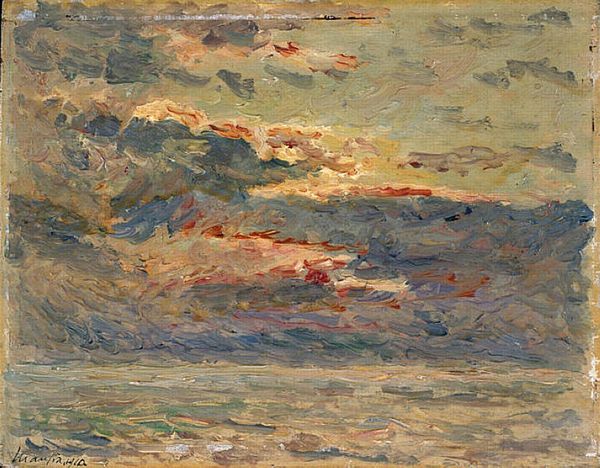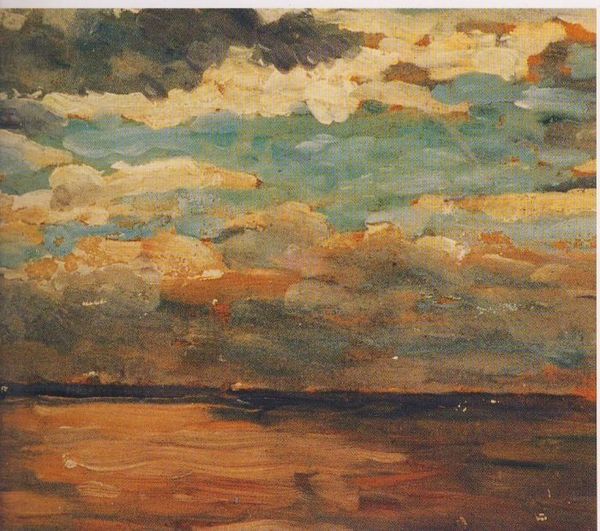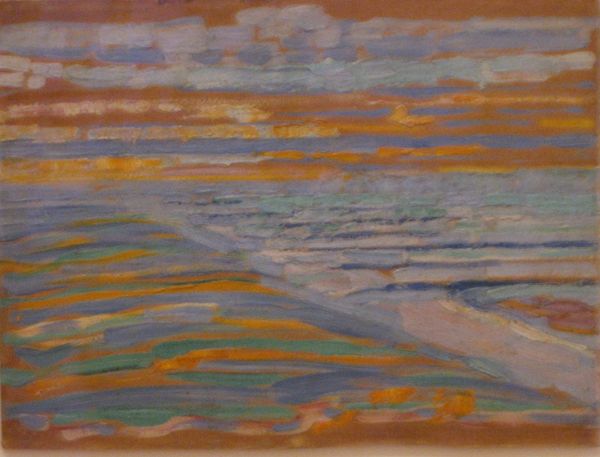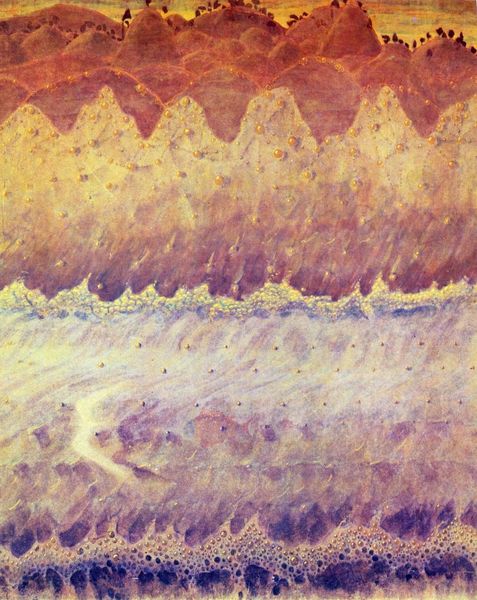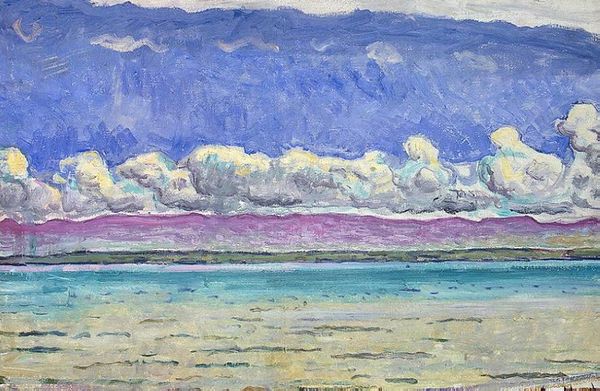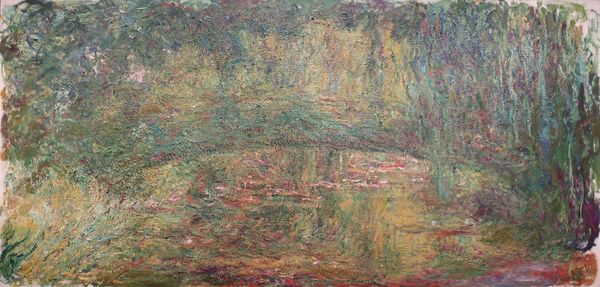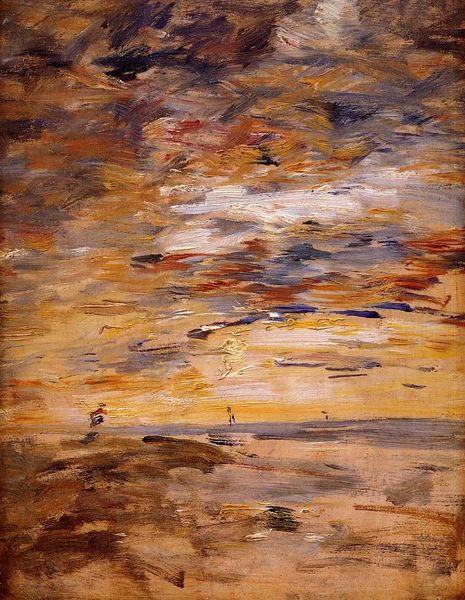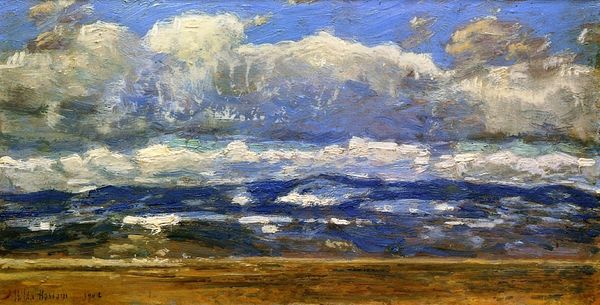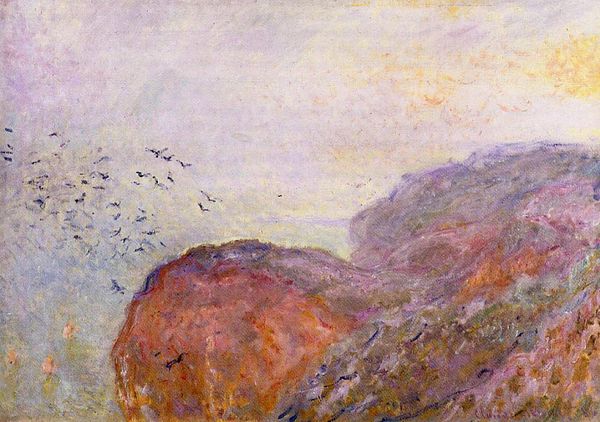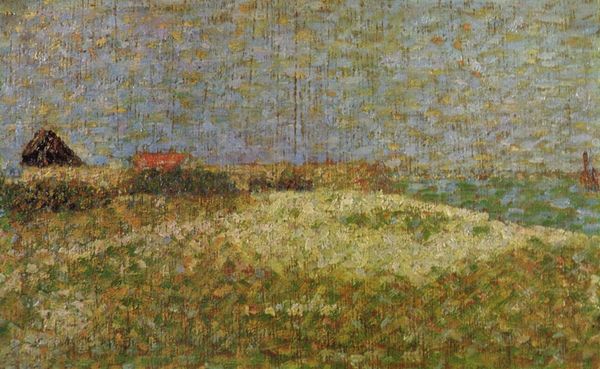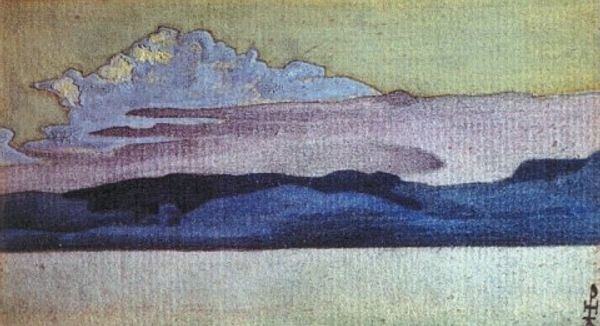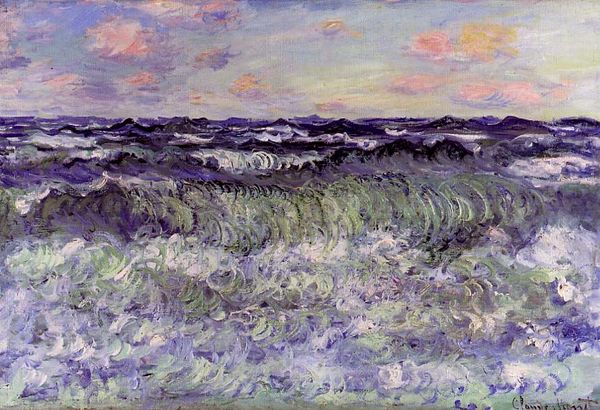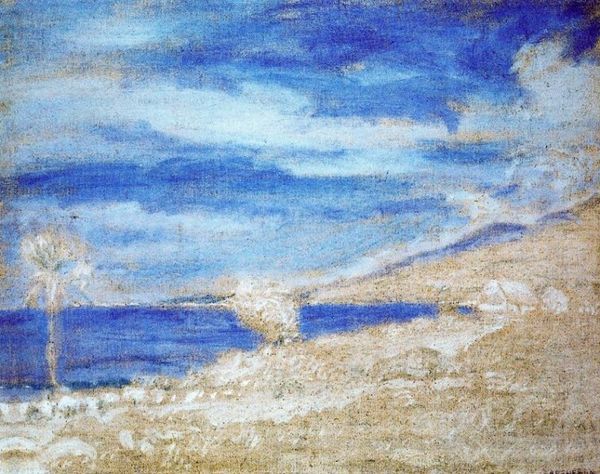
Copyright: Public domain
Curator: Theo van Rysselberghe painted "Rain Jersey" in 1907. The medium is oil paint on canvas, giving the scene this wonderful texture. Editor: Oh, I'm immediately drawn in by the muted, almost melancholic feel. There’s a sense of stillness just before a storm. It looks like the waves are holding their breath. Curator: It does possess a tranquil quality, despite depicting what looks like a tempestuous sea. Water imagery is almost always interpreted as transformative or chaotic. Yet, something about its stillness subverts the destructive reading. What symbols or iconographic markers would you attach to this piece? Editor: Well, beyond the obvious symbols of the ocean – vastness, the unknown – it’s the almost hazy atmosphere that intrigues me. Fog is historically associated with mystery and unseen knowledge. Van Rysselberghe plays with the idea that just beyond the surface there are profound secrets to be discovered. Or at least I feel like there is! Curator: Absolutely. The location also informs the work; this open body of water is, as such, without borders. A sea such as this could then represent the vast potential of nature itself and that makes for interesting symbolism to build from. Editor: It really allows one to feel present, doesn’t it? I wonder about the use of plein-air—working in open air—how it impacted van Rysselberghe's approach. You're really facing nature and all its chaotic beauty when creating outside. Curator: Indeed. This work is part of the Post-Impressionistic tradition, as such one cannot forget that its texture—the rough dabs of paint that almost look like stitches—reflects on this movement’s break away from realism. Its surface presents the work as something created, not purely found. Editor: Ah, interesting. To me it's like he has used rain, like it says in the name, as the jersey draped over nature! He isn’t capturing something but is embodying it. What about you? Do you see something in the artist's approach you find personally striking? Curator: For me, the enduring magic comes from the work's capacity to both represent a turbulent scene in nature while presenting us a chance for introspective consideration. Editor: Absolutely. It's funny, really, how art can be a mirror of both nature and the soul at the same time!
Comments
No comments
Be the first to comment and join the conversation on the ultimate creative platform.
